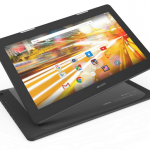Google Assistant's rollout to Marshmallow and Nougat begins today, and it comes to updated Allo too

Just a few days ago, Google announced that Google Assistant was going to spread to Marshmallow and Nougat smartphones. The wait is already over, as the company has made a follow up announcement in the form of a YouTube video indicating that the rollout starts today.
Google previously told us that Google Assistant will first make its way to the US, followed by Australia, Canada, the UK, and then Germany. The assistant's growing repertoire of talents will soon be little more than a long-press of the home button away.
Google Assistant is coming to all smartphones with Android 6.0 Marshmallow and up

If you like the idea of Google Assistant but didn’t like the fact that it was tied to the Pixel range, there's some good news. Google has announced that the handy helper is making its way to all Android 6.0 Marshmallow and Android 7.0 Nougat smartphones.
The roll out starts this week, and brings Siri- and Cortana-like voice control to millions of Android users. Earlier today at MWC 2017 in Barcelona, the newly-announced LG G6 became the first non-Pixel device to offer Google Assistant, and Google now says that the feature is coming to "eligible Android phones running Nougat and Marshmallow with Google Play Services".
Santa brought you a OnePlus 3T? Here's what to do first

Consider yourself extremely lucky: Santa just brought you one of the hottest smartphones of the year. The OnePlus 3T is the latest and greatest in OnePlus' line of flagship killers, packing really powerful hardware, a nice, big screen, solid camera, lovely software and a sleek design. It is also terrific value for money, but, hey, who cares about that right now?
If you are like me, all you can think about is taking it out of the box, setting it up and starting to use it right away. Here is what you need to know.
OnePlus 3T first-impressions review

The OnePlus 3T is shaping up to be one of the best smartphones that you can buy today. Replacing the OnePlus 3, it is a slightly beefier version of the former "flagship killer" that, at first glance, also feels more refined. Visually, it looks nearly the same, but the updated internals and improved software could make a big difference in day to day use.
This is a first look at OnePlus' new flagship, which I feel is well needed as the OnePlus 3T today makes its European debut. Many of you will be considering it as your next smartphone, and for good reasons. Obviously, a full review is coming, but until then here are my first impressions.
ARCHOS 133 Oxygen is an affordable 13.3-inch FHD Android tablet

Interesting Android tablets are becoming increasingly rare nowadays. Consumers seem fatigued by the overwhelming number of low-quality tablets on the market. Understandably, large-screen smartphones have likely stolen some of the thunder too.
Today, ARCHOS announces a tablet that is fairly generic and underwhelming in most of its specifications. For instance, there is no USB-C here. Dubbed the "133 Oxygen", there are two aspects that make the otherwise lackluster device intriguing, however. What are they? A large 13.3-inch 1080p display and an affordable price. The 10,000mAh battery doesn't hurt either.
Meet Samsung Galaxy Note7

Samsung today unveils one of the most hotly anticipated smartphones of 2016 -- the Galaxy Note7. As the latest flagship in the popular series it builds upon the success of the Galaxy S7 line, featuring similar top of the line hardware, while boasting software enhancements that accommodate the now-famous S Pen.
Quite frankly, no one would blame you for saying that the Galaxy Note7 looks like a stretched out Galaxy S7 edge that has an S Pen at the bottom. Many of the specs are basically the same and, as a first for a device in this series, even the body is waterproof. So what does it bring to the table?
Motorola unveils Moto E3 -- here's everything you need to know

Consumers who want to buy an affordable smartphone will soon have an attractive new option to consider. The Lenovo-owned Motorola today takes the wraps off the Moto E3, which features competitive specs, the latest version of Android, and a nice design at a highly appealing price point.
The Moto E line has given us some of the best entry-level Android smartphones in recent years, and the third generation is no different. This year, it packs a large screen, quad-core processor, big battery, beefier camera, and storage expansion. Let's take a closer look at it.
90 percent of Android devices vulnerable to Godless malware

When we take a look at the Android distribution updates that Google posts every month one thing seems to never change, and that is the overwhelming number of devices that run an outdated version of the operating system. As of early-June 2016, nearly 90 percent of the handsets with Google Play access are rocking Lollipop, Jelly Bean or another old distribution. Meanwhile, Marshmallow powers only 10.1 percent of Android devices.
And, as Trend Micro security researchers point out, that can be a serious problem in terms of security as there is a new family of malware, known as Godless, that affects "virtually any Android device running on Android 5.1 (Lollipop) or earlier". Using Google's figures, that's 89.9 percent of the Android handsets in use. What's really worrying is that this malware is actually linked to apps available in major app stores, like Google's Play, and it has already made 850,000 victims across the globe.
US government certifies LG's G5, V10 for enterprise and military use

LG today announced that the US government has certified its G5 and V10 flagship Android smartphones for enterprise and military use. The testing was conducted by the National Information Assurance Partnership (NIAP), which verifies the compliance of products with the "Common Criteria" international security standard, which is said to be recognized by 25 countries.
Although LG is only boasting about the two aforementioned handsets, NIAP's test results show that G4, its flagship from last year, is also fit for use in enterprise and military sectors, when running Android 6.0 Marshmallow. NIAP's stamp of approval was received on April 14.
Marshmallow now runs on 7.5 percent of Android devices

In just two months, Marshmallow has more than doubled its usage share in the Android market, thanks to the introduction of new devices and the availability of more software updates for older but popular handsets.
According to Google's latest figures, which are based on data collected during the seven days ending March 7, 7.5 percent of Android devices now run Marshmallow. When I last covered the distribution numbers in March, its usage share was at just 2.3 percent and it looked like its rise towards the top would be a very slow one.
BlackBerry Priv gets Android 6.0 Marshmallow

Android 6.0 launched over half a year ago, but even today there are still lots of devices that have yet to receive the software upgrade to Marshmallow. In fact, at the beginning of this month fewer than one in 20 were running Google's latest mobile operating system.
For BlackBerry Priv users though things are looking up. The Canadian maker has announced the Marshmallow rollout for its first Android smartphone, introducing improvements to the camera, battery, privacy, security, and more.
Oukitel aims to shake up the budget smartphone market with the sub-$50 C3

Not everyone wants or can afford a premium smartphone and Chinese makers have been busy carving out a niche at the lower end of the market with a whole raft of models that provide smartphone features at dumbphone prices.
Launching next week the Oukitel C3 is the latest entry into an increasingly crowded market. What makes it stand out is that unlike most cheaper phones which rely on older versions of Android, the C3 runs the latest 6.0 Marshmallow.
Android Marshmallow's Factory Reset Protection may be useless on your smartphone

Last year, Google introduced a kill switch in Android to prevent lost or stolen handsets from being reused. Formally known as Factory Reset Protection, this security feature has been designed to, among other things, only allow the intended owner to use the device after a factory reset has been performed. In theory, it is a great idea, so much so that some markets have actually made a kill switch mandatory, in an attempt to deter smartphone theft.
In practice, however, Factory Reset Protection is not as effective as you might expect -- it can be bypassed on the latest version of Android, 6.0.1 Marshmallow, and in the latest Android N preview.
Android Lollipop now reigns supreme, surpasses KitKat

The adoption of new Android distributions rises at a glacial pace so you should not expect the latest -- and, arguably, the greatest -- of the bunch to gain traction quickly. In fact, up until this month, the landscape was dominated by KitKat, which is now two and a half years old, and not Marshmallow, which Google introduced last October.
However, going into March, things have changed. KitKat no longer reigns supreme, as Google reveals that Lollipop is now finally running on more devices than its older brother. The usage share difference is relatively small, however, suggesting that it may take a while before KitKat will be as irrelevant as, say, Ice Cream Sandwich.
Xiaomi announces Mi 4s, an updated version of its former flagship

On top of unveiling its new Mi 5 flagship, at MWC 2016 Xiaomi has also announced an updated version of its previous top-of-the-line smartphone, Mi 4. Called Mi 4s, the new handset comes with an improved design, up to date hardware and, best of all, a price tag of around $260.
Mi 4s utilizes the same processor as found in the more affordable Mi 4c, which I have reviewed here, namely a Qualcomm Snapdragon 808. That makes it significantly faster than Mi 4, but less impressive in this regard than the new Mi 5, which sports a top of the line Snapdragon 820 chip.
© 1998-2024 BetaNews, Inc. All Rights Reserved. Privacy Policy - Cookie Policy.